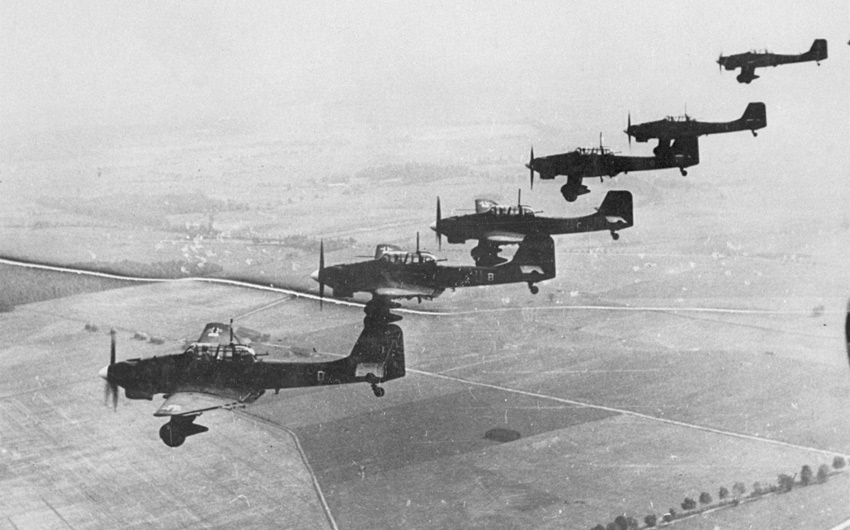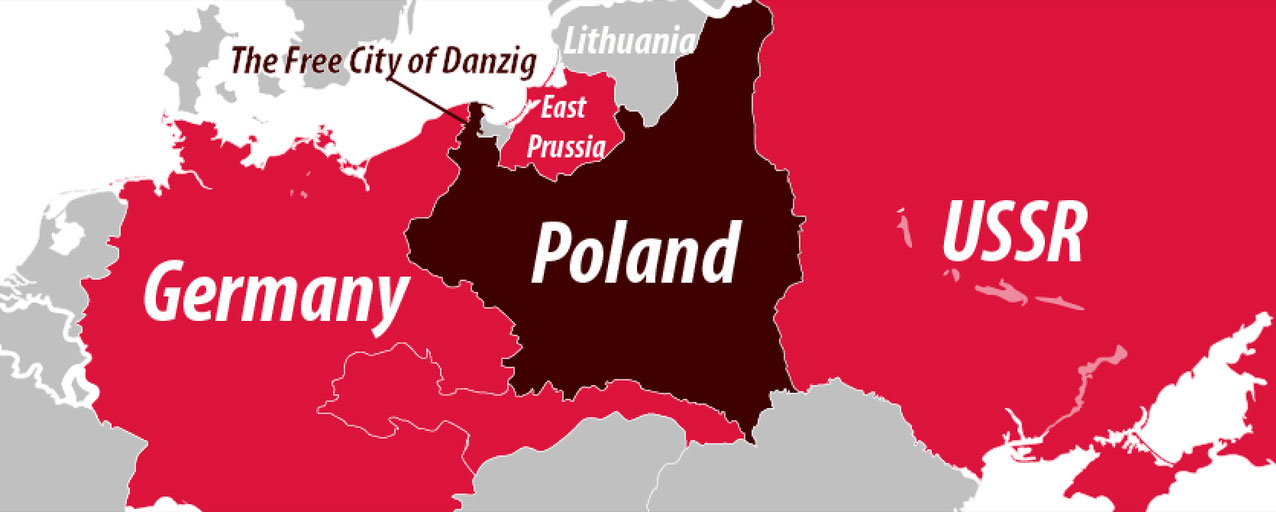The joint German-Soviet invasion of Poland in September 1939 – The “September Campaign” – marks the start of World War II in Europe and the end of the Polish Second Republic.
On the morning of September 1, at 4:40am, Operation FALL WEISS commenced as the German Luftwaffe began bombing the Polish border town of Wieluń in Southwest Poland. At 4:48am the German battleship Schleswig-Holstein began shelling the Polish garrison on the Westerplatte, near the Free City of Danzig. Over the next month, three million German, Polish, and Soviet soldiers fought for Poland’s future.
Where were the warning signs?
By 1939, Adolf Hitler had transformed Germany through six years of rearmament and political consolidation into a security state driven by a perverse concept of hyper-nationalism. Desiring Lebensraum – territory reserved for ethnic Germans – Hitler annexed Austria and western Czechoslovakia.
He next set his sights on Poland, a multi-ethnic state with a large German minority concentrated in a “Polish Corridor” that connected Poland to the Baltic but divided greater Germany from Prussia. To Poland’s east, the Soviet Union’s ideological opposition to National Socialism made it a prime target for French and British attempts at forming a balancing coalition against German expansion. However, Poland and the USSR had fought in the early 1920s and remained mutually hostile. Aggressive German diplomacy exploited Polish-Soviet hostility and derailed a potential security pact between France, the United Kingdom and the Soviet Union. On August 23, Germany and the Soviet Union negotiated a separate and secret Soviet-German pact that would erase Poland and establish a border between the USSR and Germany built on Warsaw’s ashes.
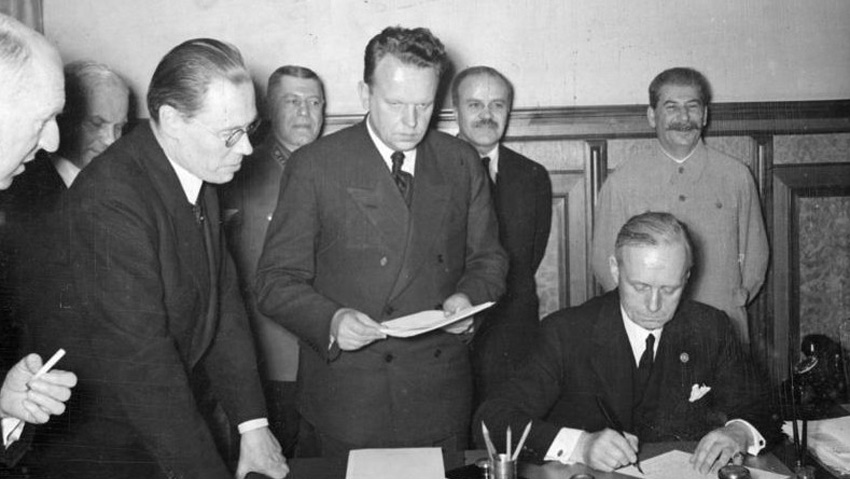
With Stalin beaming in the background, German Foreign Minister Joachim von Ribbentrop and Soviet Foreign Minister Vyacheslav Molotov sign the "German-Soviet Treaty of Friendship," clearing the way for the partition of Poland.
In late August 1939, German demands for Polish concessions peaked. France and the United Kingdom publicly declared Polish security guarantees, but in private acknowledged their reluctance to meet German aggression with military force. In almost every tangible way, Poland stood alone.
SEPTEMBER 1-17: GERMANY OVERWHELMS POLISH FORCES IN THE WEST
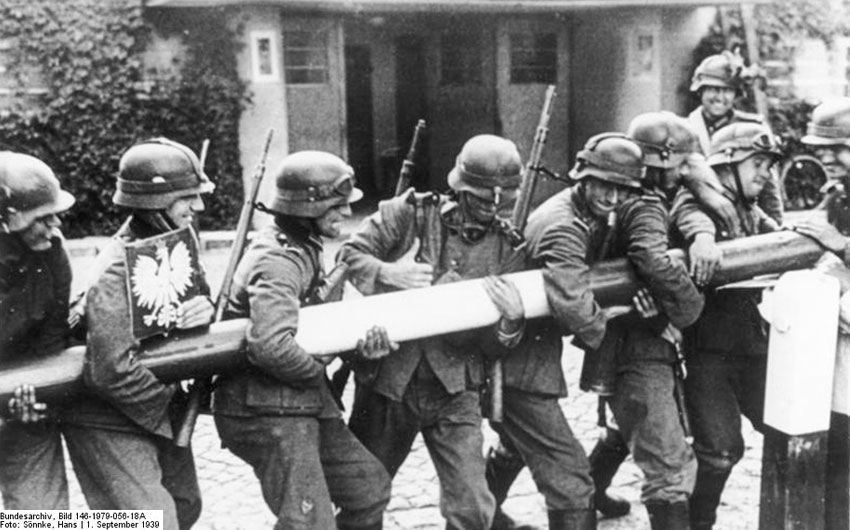
German troops removing a gate at the Polish border checkpoint at Zoppot-Gdingen Street in Danzig.
Placing faith in its allies, Poland sought to survive long enough for a British and French invasion of western Germany to relieve pressure on Poland’s forces. In the interim, German forces dictated the tempo and location of engagements against Polish armies deployed to defend the Polish-German border. Individual Polish units put up stiff resistance, but the speed of the German offensives prevented Polish leaders from formulating an effective response to their initial strategic failure.
France and Britain, plagued by overestimations of German military strength, declared war on September 3 but offered Poland only token materiel support. By September 8, the Luftwaffe had established air superiority over Poland, the Wehrmacht had captured Krakow, and Panzers had reached the outskirts of Warsaw.
Cut off from Poland’s leadership, the 225,000 soldiers of Poland’s two largest remaining Army Groups, Poznan and Pomorze, initiated the largest battle of the campaign on September 9. Polish soldiers overwhelmed German troops near the Bzura River, and temporarily relieved the Siege of Warsaw. Quickly outflanked and surrounded by Wehrmacht reinforcements, however, Poland’s initial gains west of the Bzura slipped away. German artillery, tanks, and close air support devastated the Poles and forced 190,000 Polish soldiers to surrender by September 19. The German advance eastward stood nearly unopposed.
SEPTEMBER 17: THE RUSSIANS INVADE FROM THE EAST
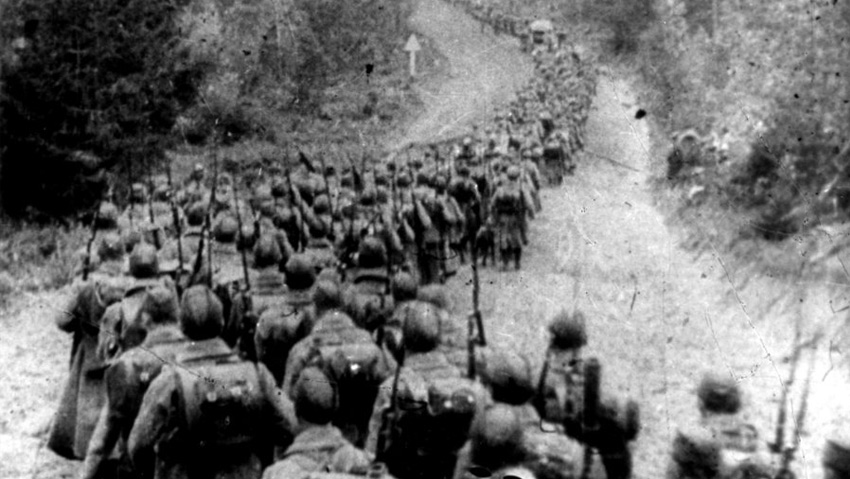
Soviet soldiers invading Poland in 1939.
Germany’s advance occurred so quickly that it threatened to overrun the negotiated border. In spite of German lobbying, it was only on September 17 – after the conclusion of the Soviet-Japanese War – that Soviet troops flooded across Poland’s Eastern border. If the Polish military was overwhelmed by the German advance, it was destroyed by the dual invasion. Polish plans to regroup its surviving military and reservists evaporated as the Soviet armies lurched West.
SEPTEMBER 27: WARSAW FALLS
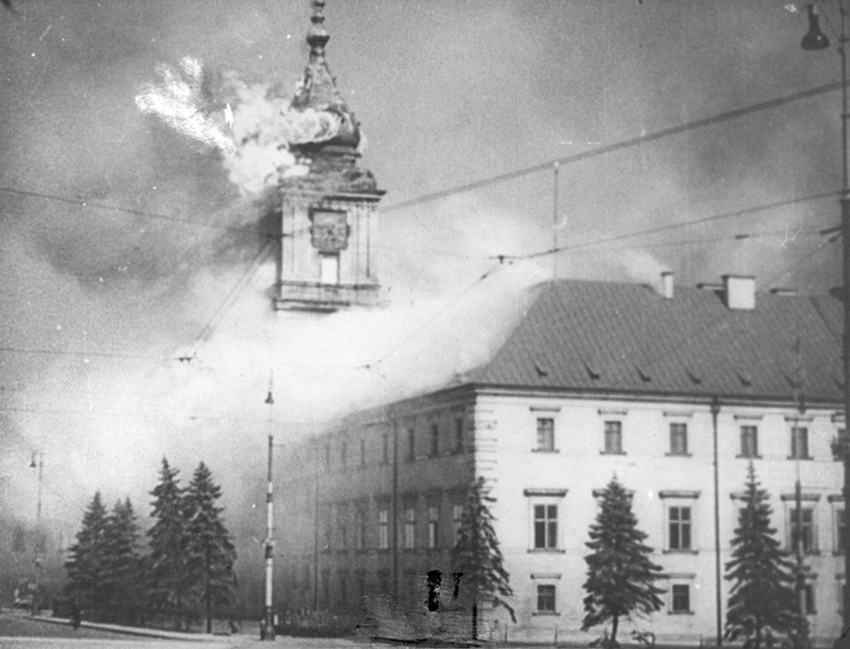
The burning of the Royal Castle in Warsaw following a German shellfire.
Poland’s last hope for salvation – a major intervention by the French and British – went unrequited. On September 27, Warsaw fell. The Polish Government fled to Romania, followed by tattered remains of Poland’s military. Other soldiers melted into the civilian population, hiding their arms and later joining resistance movements. On September 30, Ignacy Mościcki, the Polish President, transferred power to Polish officials in Paris. On October 6, at the Battle of Kock near Lublin, the Wehrmacht defeated the last active Polish military unit.
OCTOBER 1939: POLAND Is PARTITIONED
The unanticipated speed of Germany’s advance resulted in German occupation of territories assigned to the Soviet Union by the Molotov-Ribbentrop pact. After brief negotiations, Germany annexed much of Northern and Eastern Poland and turned the rest of its holdings into the General Governorate, an administrative unit controlled from Krakow. The Soviet Union occupied Poland east of the Bug River, in what is now modern day Ukraine and Belarus. Poland’s allies, France and the United Kingdom, continue to fight a “Phony War” until the German invasion of France and the lowlands eight months later.
Abandoned by its allies, the Second Polish Republic disappeared from the map of Europe.
